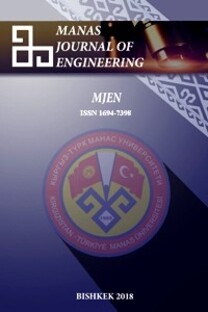Accelerating renewable energy generation over industry 4.0
Accelerating renewable energy generation over industry 4.0
___
- [1]. Allen R.C. “Why the industrial revolution was British: commerce, induced invention, and the scientific revolution 1”, The Economic History Review, 64(2), (2011), 357-384. doi.org/10.1111/j.1468-0289.2010.00532.x
- [2]. Viorel O. Considerations on the Contemporary Revolution in Military Affairs.
- [3]. Technological change is coming: The Fourth Industrial Revolution, Labor Market Intelligence Report, TESDA: Technical Education and Skills Development Authority, December 2016
- [4]. Peter O., Mbohwa, C. “Correlation between Future Energy Systems and Industrial Revolutions”, (2018), 1953-1961.
- [5]. Hillstrom K. The Industrial Revolution. Greenhaven Publishing LLC. (2008).
- [6]. Mokyr J. “The second industrial revolution, 1870-1914. Storia dell’economia Mondiale”, (1998), 219-45.
- [7]. Yin Y., Stecke K.E., Li D. “The evolution of production systems from Industry 2.0 through Industry 4.0”. International Journal of Production Research, 56(1-2), (2018), 848-861. doi.org/10.1080/00207543.2017.1403664
- [8]. Brunet-Thornton R., Martinez F. (Eds.). Analyzing the Impacts of Industry 4.0 in Modern Business Environments. IGI Global. (2018), 42.
- [9]. Khan A., Turowski K., "A Preliminary Study on Industry 4.0", Journal of Industrial and Intelligent Information, 4 (3), (2016), 230-234. doi: 10.18178/jiii.4.3.230-234.
- [10]. Charlie Ashton, August 16, 2017, Solving Critical Business Challenges for “Industry 4.0”
- [11]. Machinery C. “Computing machinery and intelligenceAM Turing”, Mind, 59(236), 433. (1950), 433–460.
- [12]. Dopico M., Gomez A., De la Fuente D., García N., Rosillo, R., Puche, J. (2016). A vision of industry 4.0 from an artificial intelligence point of view. In Proceedings on the International Conference on Artificial Intelligence (ICAI) (p. 407). The Steering Committee of the World Congress in Computer Science, Computer Engineering and Applied Computing (WorldComp). ISBN: 1-60132-438-3
- [13]. Lee J., Davari H., Singh J., Pandhare V. “Industrial Artificial Intelligence for industry 4.0-based manufacturing systems”, Manufacturing letters, 18, (2018), 20-23. doi.org/10.1016/j.mfglet.2018.09.002
- [14]. Dankwa-Mullan I., Rivo M., Sepulveda M., Park Y., Snowdon, J., Rhee K. (2018). Transforming Diabetes Care Through Artificial Intelligence: The Future Is Here. Population health management. doi.org/10.1089/pop.2018.0129
- [15]. Jiang F., Jiang Y., Zhi H., Dong Y., Li H., Ma S, Wang Y. “Artificial intelligence in healthcare: past, present and future”, Stroke and vascular neurology, 2(4), (2017), 230-243. doi: 10.1136/svn-2017-000101
- [16]. Private Equity Investment in Artificial Intelligence, OECD, December (2018).
- [17]. Lucas L., Waters, R. The AI arms race: China and US compete to dominate big data. (2018).
- [18]. Tim Dutton, Building an AI World Report on National and Regional AI Strategies. (2018).
- [19]. Kewalramani M. China’s Quest for AI Leadership: Prospects and Challenges. (2018).
- [20]. Dijital yasam Journal 2018 Issue:17, Will Artificial Intelligence save or destroy humanity?
- [21]. Griggs T., Wakabayashi D. (2018). How a self-driving Uber killed a pedestrian in Arizona. The New York Times.
- [22]. Cellan-Jones R. Stephen Hawking warns artificial intelligence could end mankind. BBC news, 2, (2014).
- [23]. Bundy A. Smart machines are not a threat to humanity. Commun. ACM, 60(2), (2017), 40-42.
- [24]. Noah H.Y. Homo Deus: A brief history of tomorrow. London: Harvill Secker. (2016).
- [25]. Mclay R. Managing the rise of Artificial Intelligence. Retrieved November, 10, (2018).
- [26]. Report Mckinsey Co (2017).
- [27]. Rüßmann M., Lorenz M., Gerbert P., Waldner M., Justus J., Engel P., Harnisch M. “Industry 4.0: The future of productivity and growth in manufacturing industries”, Boston Consulting Group, 9(1), (2015), 54-89.
- [28]. Bloch M., Blumberg S., Laartz J. “Delivering large-scale IT projects on time, on budget, and on value”, Harvard Business Review, (2012), 2-7.
- [29]. Outcomes, Insights, and Best Practices from IIC Testbeds: Microgrid Testbed, IIC Journal of Innovation, September (2017).
- [30]. Hydropower operators discuss ‘new reality’ of digitalization. Posted on 1st October 2018 by IHA communications team.
- ISSN: 1694-7398
- Yayın Aralığı: 2
- Başlangıç: 2001
- Yayıncı: KIRGIZİSTAN-TÜRKİYE MANAS ÜNİVERSİTESİ
Elmira ABDYLDAEVA, Gulbarchyn Taalaibek KYZY, Bermet NARKULOVA
A review study on the using of diethyl ether in diesel engines: effects on smoke and PM emissions
Finite element analysis of thermal stress of laminated composite plates using Taguchi method
Assisting tool for essay grading for Turkish language instructors
Rita Ismailova, Mustafa Alp Çetin
Generalized solution of boundary value problem with an inhomogeneous boundary condition
Elmira Abdyldaeva, Gulbarchyn Taalaibek kyzy, Bermet Аnarkulova
Ahmet HASTÜRK, Nursel AKÇAM, Tayfun OKAN
On the recursive sequence 20 1 2 5 8 11 14 17
Muideen Adebayo BODUDE, Theddeus Tochukwu AKANO, Adebayo Felix OWA
